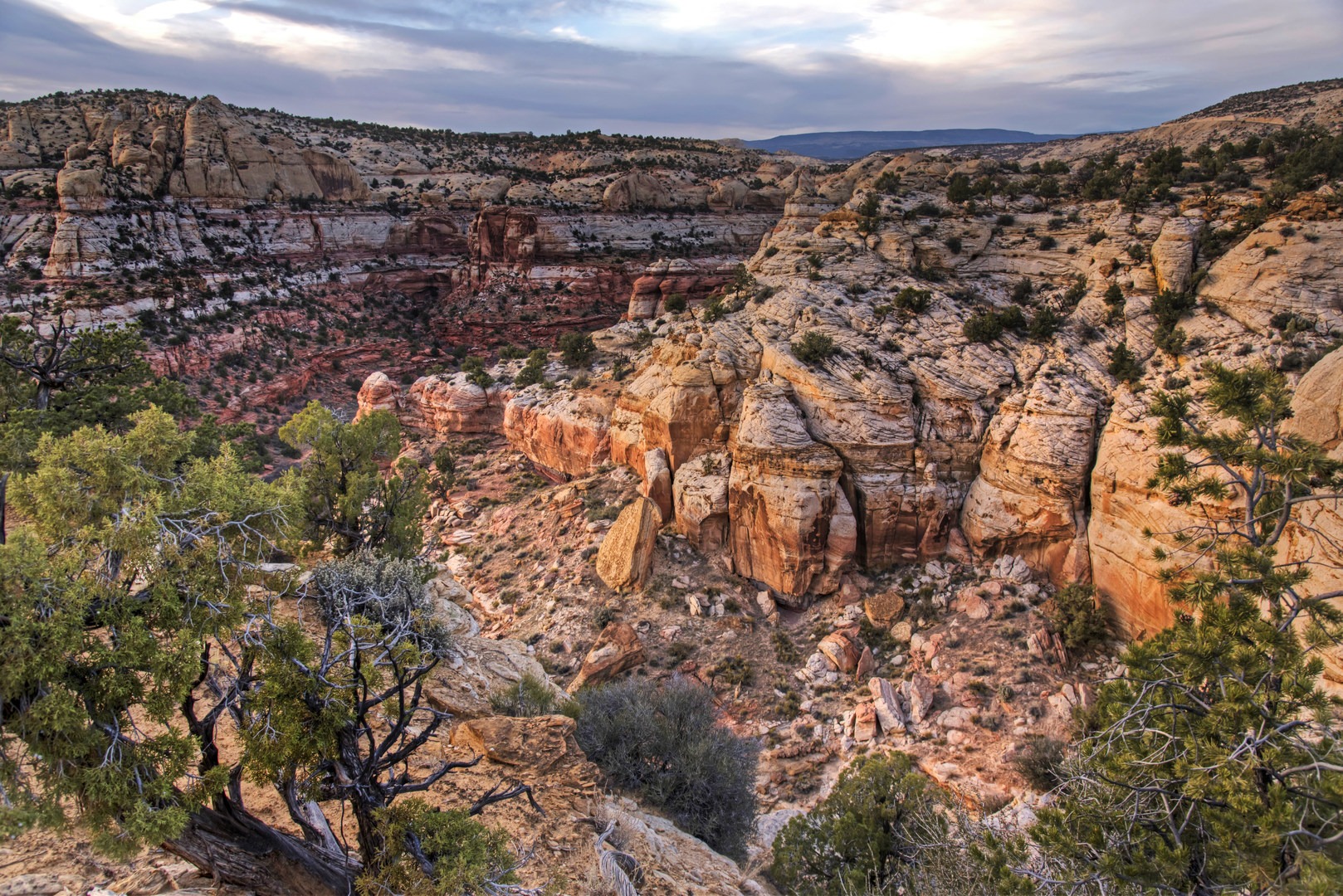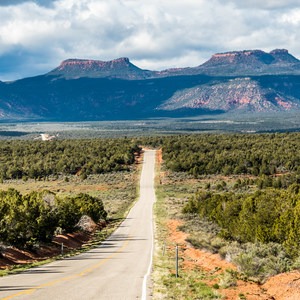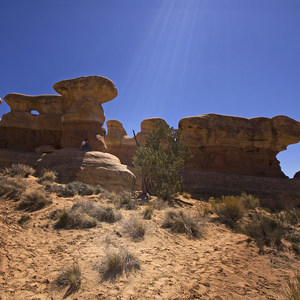You are here
The day many people have been fearing has finally come.
On December 4, 2017, President Trump announced massive cuts to Utah's two largest national monuments, an unprecedented and potentially illegal move that has sent local Native Tribes and the conservation world into a frenzy. The cuts in size were nothing short of catastrophic: Grand Staircase-Escalante National Monument saw its footprint cut in half, while the newly minted Bears Ears was reduced by an astounding 85%. The move came after a review by the new Secretary of the Interior, Ryan Zinke, who also recommended a reduction to a handful of other monuments around the West. The two Utah monuments were created by the authority of the Antiquities Act of 1906 by President Bill Clinton and President Barack Obama. Moves deemed a "federal land grab" by the heavily Republican state legislation as well as many of the local residents affected by the monuments borders. An alliance of Native American Tribes that include the Hopi, Navajo Nation, Ute Mountain Ute Tribe, and the Pueblo of Zuni have filed a joint lawsuit to halt the reduction of Bears Ears. They've publicly stated that the administration "has declared war on us" and that they will not allow this illegal action to proceed.
Bears Ears is America's newest national monument. The paint has barely had time to dry on the signs denoting its borders, and it has already come under attack. A recently released report by the Washington Post reveals one of the potential powers behind the cut: A uranium mining company heavily lobbied Trump to remove protection from areas especially rich in the radioactive material. With the recent advances in sustainable technology, the idea of needing to mine more uranium for dangerous nuclear power plants or weapons is simply ludicrous. As this recent article from High Country News points out, there are 500 old uranium mines within Navajo Nation alone, exposing the locals to several times the normal radiation levels of non-reservation lands. The countless mines of the 20th century have long been shuttered and even turned into expensive Superfund clean-up sites, such as the one in Moab, Utah.
Grand Staircase-Escalante National Monument is one of the premiere wild landscapes of the American West. Along with Bears Ears it has some of the most valuable national treasures our country has to offer in paleontology, archeology and geology. The area has recently produced an almost completely intact T-Rex fossil, a truly rare find. These areas also relieve a ton of pressure from Utah's nearby and over-crowded national parks by giving the more adventurous visitors a rugged and vast landscape to explore. Along with its famous slot canyons, hoodoos, rock art, ancient remnants and the highest biological diversity in the state, Grand Staircase-Escalante National Monument is also cursed with mineral wealth. The largest concentration of coal in Utah sits underneath the borders that President Clinton designated, and those areas will be stripped of protection under the newly redrawn boundaries. Extracting and burning this dirty and obsolete fuel is a terrible idea in the 21st century.
As I sit and write this article, Salt Lake City's air quality is consistently the worst in the nation, keeping me from seeing the surrounding mountains from my dining room window because they are covered in a haze of white pollution trapped by the valley's geography during winter. The lost revenue from declining tourism, residents moving to cleaner cities, and from the public health costs will far outweigh any economic bump gained by drilling companies and their employees. This is a classic example of the health of the greater good being forsaken for the benefit of a few powerful lobbies. The earliest and most glaring example of lost state revenue directly related to these actions is the relocation of the Outdoor Retailer show out of Salt Lake spurred by Patagonia's protest against the governor's consistent disregard for public lands. Utah will see an estimated $45 million decline across the airline, retail and hospitality sectors due to this relocation, and that is a conservative estimate.
Whether we are talking economics, the environment, preservation, Native rights, or legality, the evidence is overwhelmingly in favor of keeping the old boundaries. We cannot continue to fall into the trap of staying on the path of least resistance; we now have the technology to head in a new direction. Fossil fuels are for the dinosaurs, and action needs to come from the grassroots level by supporting groups such as the Southern Utah Wilderness Alliance and the Conservation Alliance, or companies like Patagonia who are now pursuing legal action against the reduction. The Native American DIne Bikeyah is a non-profit group bringing awareness to the area through education as well through legal action against the Federal Government for once again going back on a land treaty signed barely one year prior. This fight goes way beyond just protecting a beautiful area for outdoor recreation. This decision has far-reaching consequences for a large portion of the state's population.







Comments
Sign In and share them.